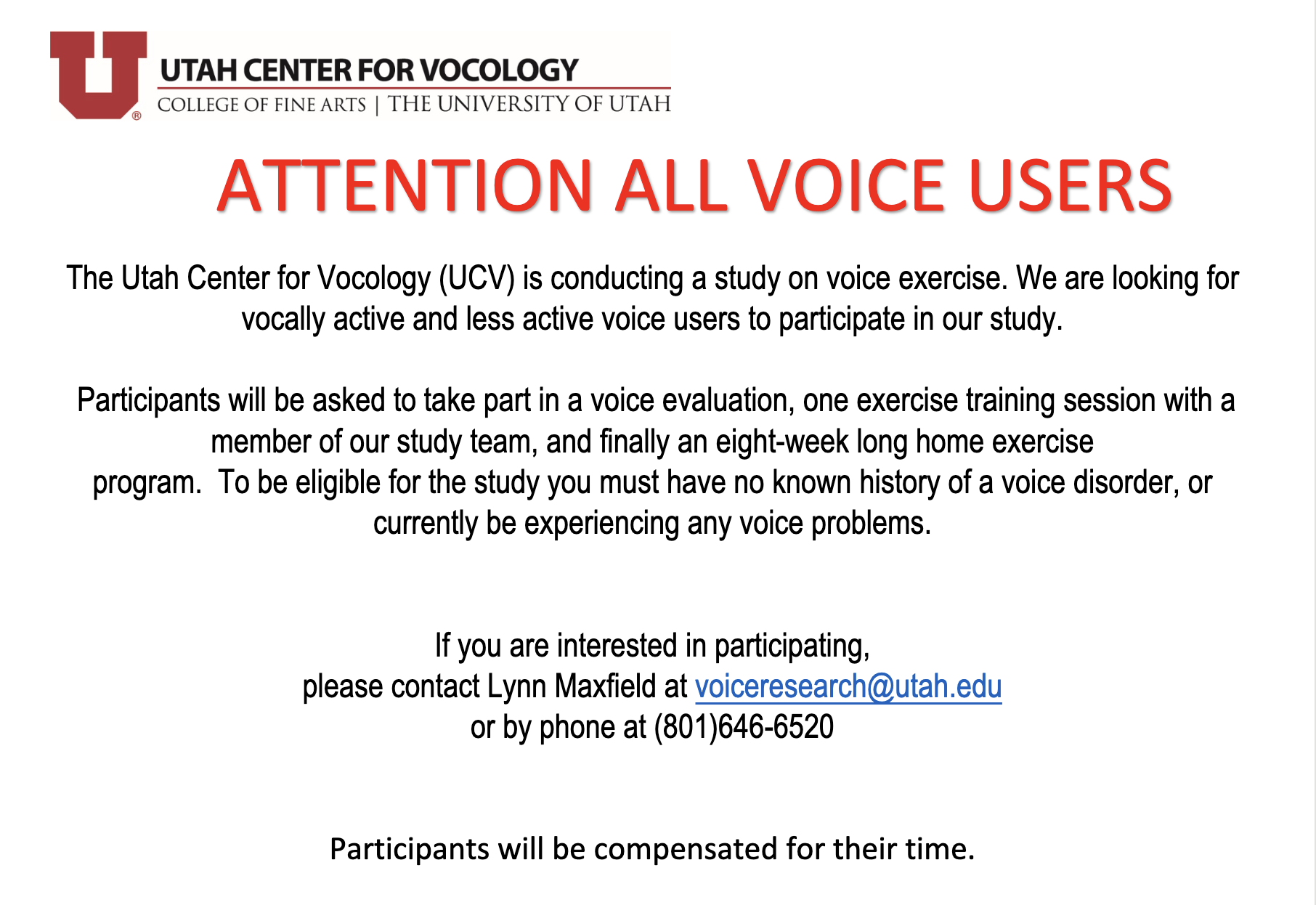Current Research Projects
Voice Source and Airway Interation in Normal and Hyperfunctional Speech
Principal Investigator: Dr. Ingo Titze
NIH Project Number: 5R01DC017998-04
The severity of voice disorders is often described in terms of roughness in the laryngeal sound source. Much research has been undertaken to describe and quantify this roughness with perceptual, acoustic, and visual imaging methodologies. While these approaches provide a useful description of the final outcome of a disordered system, they say little about the internal system interactions that lead to this outcome. Self- sustained vocal fold vibration in an airway is an example of a highly interactive (nonlinear) process that has the ability to self-organize. If interaction is strong enough, with energy flowing bi-directionally between components, a structurally disorganized system can become functionally organized. Two asymmetric vocal folds with independent and unrelated natural vibration patterns can synchronize their combined motions as long as energy is allowed to flow between them. Thus, synchronization in coupled oscillators has become an important part of the physics and biology of self-organization. New opportunities will open up for clinicians who re-structure or re-program an impaired vocal system. The first aim is designed to improve the computational fluid dynamics of the voice simulator VoxInSilico. Critical shapes of an asymmetrical 3D glottis (airspace between the vocal folds) will be examined that include a variety of contact patterns on the medial surfaces of the vocal folds. The critical shapes will then define the airflow channels, for which isobar contour lines will be derived. To maintain both speed and fidelity of computation, analytical approximations will be developed for the isobars so that interpolations can be made between time steps in a glottal cycle during later time-dependent simulations. Further validation of the isobar contours will be obtained with three-dimensional computer assisted design (CAD) of physical models of the glottal shapes. Pressure taps will be placed so that gradients of pressure can be determined in coronal and horizontal planes. The second aim is to explore synchronization for asymmetric vocal folds with modified airway structures above the vocal folds. The clinical condition known as hyper-function will be addressed. The laryngeal and pharyngeal regions of the vocal tract will be systematically widened and narrowed for decreased and increased source-filter interaction. Vocal efficiency and periodicity measures will be compared to non-interactive baseline cases. The remaining two aims address source-filter interaction in connected speech, where both prosodics and articulation vary continuously. Contours for sound pressure level and fundamental frequency (SPL- fo), as well as contours in vowel space (F1 - F2), will be obtained from adult speakers using limited, normal, and heightened speech gestures. Synchronization between harmonics nfo and formants F1 and F2 will be determined. Vocal efficiency and periodicity will be compared.
The Role of the Vocal Ligament in Vocalization
Principal Investigator: Dr. Ingo Titze
NIH Project Number: 5R01DC018280-04
This research addresses an important public health concern, the development and maintenance of adequate pitch variation and vocal clarity throughout the life span. Evidence has been growing that vocal pitch range and stability of vocalization can be maintained with voice training and therapy techniques that rely heavily on repeated pitch glides, presumably to stretch the vocal ligament. It is impossible to measure directly the time-course of remodeling the vocal ligament with exercise in live humans. However, strong inferences can be drawn from structural and mechanical diversity across several species, from tissue engineering, and from computational modeling. In this proposal, we combine (1) microscopic imaging to test collagen density and fiber orientation in multiple species, (2) bioreactor design of a vocal ligament with combined axial and vibrational stress and selected growth factors, (3) finite-element computer modeling to predict fundamental frequency ranges and stability in vocal fold adduction, and (4) human subject exercise protocols to increase fundamental frequency range and vocal adduction control. While the aims can all be executed independently, they cross-validate each other on the basic premise that the vocal ligament is critical for fo range and can change over time. A first hypothesis is that the ligament can sustain high tension (up to 1 MPa) for high fundamental frequencies. A second hypothesis is that the vocal ligament serves as a stabilizer in vocal fold posturing and maintaining a consistently straight fold edge for glottal closure. Doses of repeated stretching are designed for engineering tissue in vitro and for human subject exercises. Results will benefit a large population of people who are vocally active but whose voices appear physiologically weak or aged.
Investigating the Mechanisms Governing the Impact of Voiced and Non-Voiced Arts Participation on Biomarkers of Health and Wellbeing
Principal Investigator: Dr. Lynn Maxfield
Research Incentive Seed Grant; Vice President of Research and College of Fine Arts, University of Utah
Current Research Participation Opportunities
UPDATED 1/27/2023


